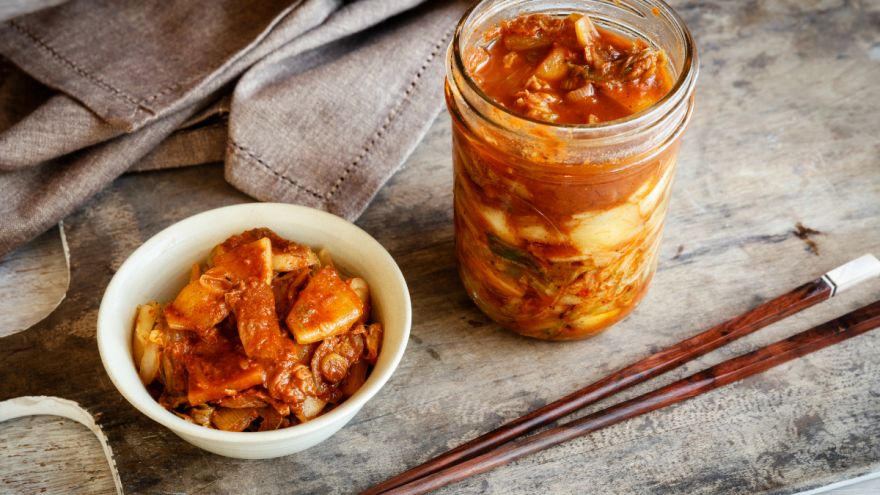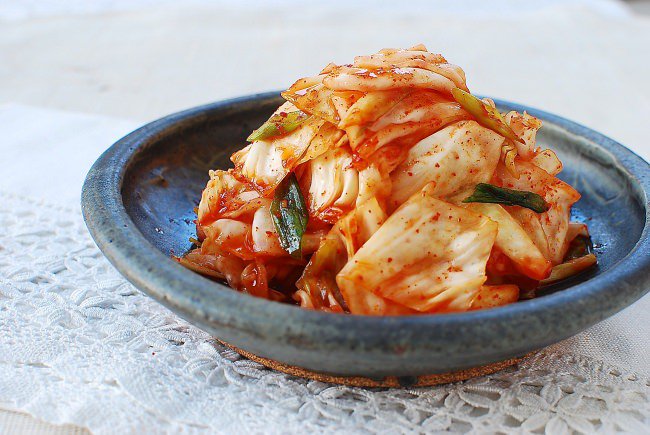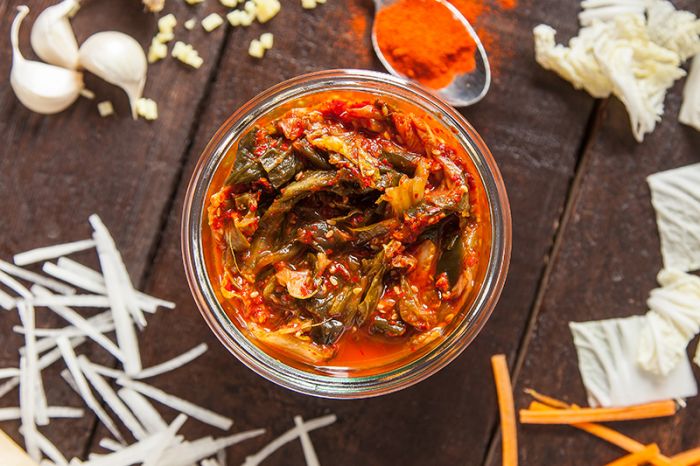How to Make Kimchi? Here are Our Favorite Recipes!

As one of the most popular Asian dishes, kimchi is a recipe that takes a sufficient amount of time and effort. This is because it requires a lot of attention to achieve the desired flavor similar to its authentic roots.
If you’ve been interested in this fantastic take on cabbage to help elevate your cooking skills, there are many recipes to choose from. With the right tips and tricks, making kimchi at home can be easy, especially if you make it often. Below are our favorite 2 recipes that anyone can do!
1. The Easiest Kimchi

This recipe is arguably one of the easiest on the list, however, we’d like to think that all 3 are simple enough to master with time.
Ingredients
- 2 pounds of napa cabbage
- ¼ cup of sea salt
- Filtered or distilled water
- 1 tablespoon of garlic
- 1 teaspoon of fresh ginger
- 1 teaspoon of granulated sugar
- 2 tablespoons of fish sauce
- 3 tablespoons of Korean red pepper flakes
- 8 ounces of Korean radish
- 4 medium scallions
Directions
✓ Using your knife, cut the cabbage lengthwise into quarters. You’ll then have to remove the cores from each piece. Once this is finished, cut each of the quarters crosswise into 2-inch strips.
✓ Add the cabbage into a bowl and put the sea salt on top. You’ll want to use your hands to make sure the salt is massaged into the cabbage until it starts to feel a little soft. Once it’s soft enough, add just enough water so that the cabbage is covered. Using a plate or saran wrap, cover the top of the bowl and allow it to sit for up to 2 hours.
✓ After the 2 hours is up, rinse the cabbage with cold water at least 3 times. Once you think all of the salt is gone, drain the cabbage and let it rest for 20 minutes.
✓ Combine the fish sauce, ginger, garlic, and sugar together in a bowl until it reaches a paste consistency. You can then stir in the Korean red pepper flakes, but remember, the more you put in, the spicier the kimchi will be.
✓ You can now combine the cabbage into the spice paste and add in your scallions and radish. Make sure you mix the combination of ingredients thoroughly using your hands. It’s recommended that you use gloves, as the mixture can leave a smell behind on your skin.
✓ Using a mason jar, pack the kimchi into the jar and press down on the mixture. This should make the brine rise to the top and cover the vegetables at the bottom. You can then seal the jar and allow it to ferment for up to 5 days. Make sure that while it’s fermenting, the jar is kept out of sunlight and is kept at room temperature.
✓ Each day, take the time to check the kimchi by pushing the mixture down with a spoon to make sure the vegetables stay under the brine. You should also taste it to make sure it reaches the perfect ripeness. Once it is ripe enough, put the jar in the fridge. At this point, some people might eat the kimchi right away, however, for the best flavor, it’s recommended that you leave it in the fridge for an additional week.
2. Vegan Kimchi

There’s no reason as to why you should miss out on the fantastic flavors of kimchi simply because you lead a vegan lifestyle. Even though you might think a vegetable-based dish is vegan, not all of the ingredients in the traditional recipe are. Below is our favorite vegan kimchi recipe that you will love just as much as the original.
Ingredients
- 1 head of napa cabbage
- ¼ cup of sea salt
- 2 tablespoons of tamari
- 2 tablespoons of coconut sugar
- ¼ cup of pineapple juice
- ¼ cup of warm water
- 3 tablespoons of fresh ginger
- 1 clove of garlic
- 1 small white onion
- ½ cup of chili flakes
- 2 whole carrots
- 6 green onions
Directions
✓ The first thing you are going to want to do is to make sure that all of your utensils are sterilized. As kimchi is a recipe that needs to be fermented, you’ll want to prevent the presence of harmful bacteria in the mixture.
✓ Next, it’s time to prepare the cabbage. Using a knife, quarter the cabbage and remove the bottom core, disposing of it. Once the cabbage has been quartered, you can put it in a large mixing bowl and add salt on top. Make sure that you salt the cabbage leaves thoroughly, you may even want to use your hands to mix everything together. Allow the salted mixture to sit for 30 minutes.
✓ As the cabbage rests, you can begin working on the vegan fish sauce. Combine the tamari, coconut sugar, pineapple juice, and warm water together in a bowl. You can use a whisk to combine them all. Once the fish sauce is finished, set it aside.
✓ You can now start working on the chili sauce by combining the chili flakes, onion, ginger, and garlic together in a blender. The more chili flakes you add, the spicier the recipe will be, so make sure you add them carefully. Once the ingredients are in the blender, add in the fish sauce and pulse everything together until they are combined.
✓ Using your hands, mix your cabbage further and allow it to sit for an additional 30 minutes.
✓ Using the green onion and carrots, chop them and put them together in a mixing bowl with the sauce. Combine everything together and set it aside.
✓ At this point, your cabbage should be very tender. Using cold water, rinse the cabbage leaves thoroughly and then place them on a very absorbent cloth. You’ll want to make sure that all of the water is out of the cabbage. Once it’s dry, put the cabbage back in the large bowl and add in your sauce. Using gloves, mix everything together and make sure you’re being generous with the coating.
Add the finished mixture into a mason jar or air-tight container and push the mixture down, releasing any air bubbles. Cover the jar or container and then store it in a cool and dark space for at least 36 hours. After the 36 hours is up, transfer the container to the fridge for up to a week. The general rule of thumb with kimchi is the longer it’s left to ferment in the fridge, the tangier it will be. However, it’s not recommended to let it ferment for more than 21 days.
Pin for later

